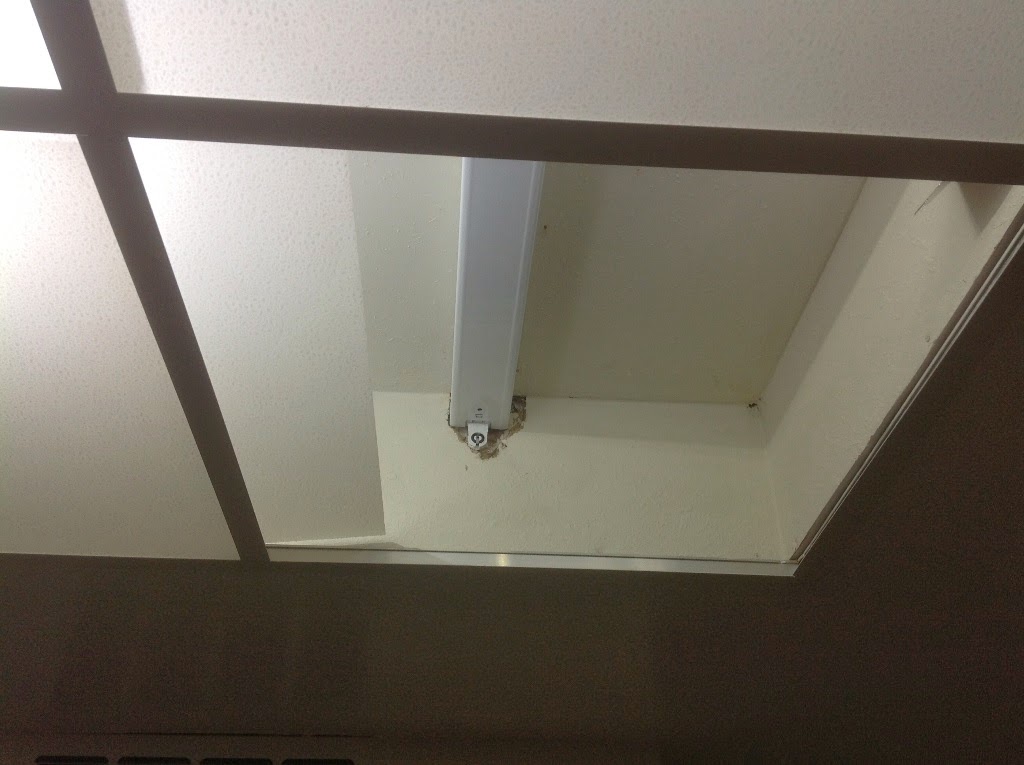 Here is an example how I convert a fluorescent ceiling lamp into LED lamp. To decide if a lamp can use Easy LED module for conversion, there are couple of things we should be looking into.
Here is an example how I convert a fluorescent ceiling lamp into LED lamp. To decide if a lamp can use Easy LED module for conversion, there are couple of things we should be looking into.First, Easy LED module is about 9" long and 3 inch wide. We can decide where and how many modules to be fitted into lamp case. Some lamps could use two, some lamps could fit 3 or more modules. In this example, we choose two modules for the size of lamp and light output. The second thing we want to check out is whether it has proper diffuser and the diffuser should be placed at least 4" away from light source.
The lamp of target a 14" square lamp, it uses 2 round fluorescent tubes of 32W and 22W, totally 54W, and the Easy LED kit I use is 30Watt Easy LED kit to replace the light source.
 | |
| 32W + 22W fluorescent tubes |

To install, the first step is to remove fluorescent tubes and the ballast, we only need the power feed. The ballast can be removed by losing two screws, and the metal hooks can be removed by moving them back and forth several times then pull off.
 Second step is to mount Easy LED modules and driver on the lamp base. I mount the module at symmetric far side location and mount the driver in the middle for balance of weight and light output. Make sure you leave the lamp base mounting screw holes uncovered. The lamp base is clean and smooth, I use attached double sided tape to fasten the modules and driver; however the lamp base is somewhat soft and twist-able (wobble) , so I also use included mounting screw to enforce the mounting (use 7/64" drill bit to drill a pilot hole first, the the screw can be easily screwed in ), I only need one screw per module.
Second step is to mount Easy LED modules and driver on the lamp base. I mount the module at symmetric far side location and mount the driver in the middle for balance of weight and light output. Make sure you leave the lamp base mounting screw holes uncovered. The lamp base is clean and smooth, I use attached double sided tape to fasten the modules and driver; however the lamp base is somewhat soft and twist-able (wobble) , so I also use included mounting screw to enforce the mounting (use 7/64" drill bit to drill a pilot hole first, the the screw can be easily screwed in ), I only need one screw per module. Once modules and driver are mounted, follow the link to connect the wires, put the diffuser cover back on. The conversion is then completed, it took me less than 20 minutes. Now this lamp only cost about half of energy to run and the 30 Watt LED lamp is brighter than existing 54 Watt fluorescent tubes for this lamp. And I don't think I will be needing a ladder for replacing burn tube for a long long time.
Once modules and driver are mounted, follow the link to connect the wires, put the diffuser cover back on. The conversion is then completed, it took me less than 20 minutes. Now this lamp only cost about half of energy to run and the 30 Watt LED lamp is brighter than existing 54 Watt fluorescent tubes for this lamp. And I don't think I will be needing a ladder for replacing burn tube for a long long time.30 Watt Easy LED kit is available at www.easyledlighting.com for sale with $39.
Typical LED ceiling Lamp would run at $90.















